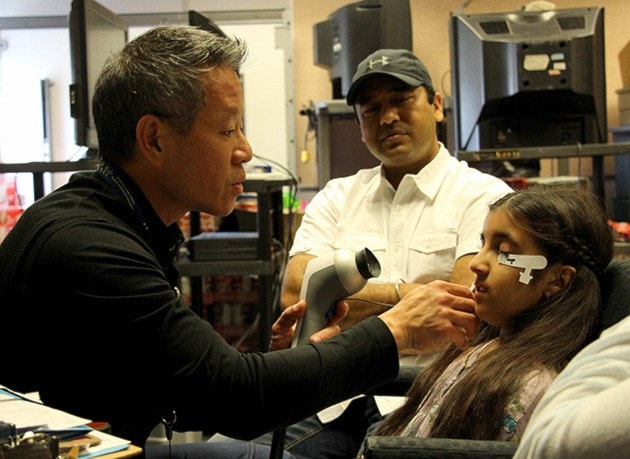North central B.C.’s students with low vision, which cannot be corrected with glasses or surgery, did not need to travel far this season for comprehensive assessment and support.
On May 11 and 12, ten students from the region — including Moricetown, Smithers, Burns Lake, Fort St. James, and Quesnel, received low vision services and visual aids from eight eye specialists hosted at W. L. McLeod Elementary.
Station by station, students assessed their ability to see, learned about what’s structurally wrong with their eyes, tried various visual aids that current technology offers, received tips on how to navigate independently, and learned about available education tools tailored for the visually impaired.
At the end of the session, students and their accompanying family discussed next steps with their school support staff on how their needs can be supported while learning, and were gifted with basic visual aids such as monoculars and other specialized tools.
It’s the first time for Vanderhoof to host the attending medical professionals from Children’s Low Vision Project of British Columbia, which started in the Central Okanagan school district 11 years ago, said Cathy Tassie, teacher for the visually impaired in the Nechako Lakes School District.
The project’s team last came to the area in 2007 when the specialists visited Prince George, Tassie added.
“My students need to have this extra help to understand their vision more,” she said. “How to manage in unfamiliar situations or buildings, or get around town, or use crosswalks…how to be more independent.”
Aiming to help improve the quality of life of low vision students, as well as reduce the use of large print through technology, the project is a one-stop shop for families to get information that they otherwise would need to obtain from different locations, explained program coordinator Lynn Langille.
Part of the project’s focus is to provide rural communities with access to services that are normally located in larger centres in the province, Langille added.
For BreAnn Arnold, whose daughter Tia currently studies Grade 3 and has worn glasses since she was three, it was neat to have in-depth specialists to figure out what Tia needs.
“Different new tools and technology to aid her better, and to check her eyes and see how they function,” Arnold said. In the past, Tia has been diagnosed with hydrocephalus — the buildup of fluid in the cavities deep within the brain. According to a recent eye exam, her vision requires 13 units of correction for nearsightedness. When asked what she see with a monocular held to her eye, Tia said, “I can see everything.”
